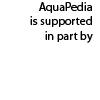Difference between revisions of "Yarlung Zangbo / Brahmaputra River: Competing Priorities of Hydropower and Agriculture"
| [unchecked revision] | [unchecked revision] |
m (Saved using "Save and continue" button in form) |
m (Saved using "Save and continue" button in form) |
||
| Line 2: | Line 2: | ||
|Water Use=Agriculture or Irrigation, Fisheries - wild, Hydropower Generation | |Water Use=Agriculture or Irrigation, Fisheries - wild, Hydropower Generation | ||
|Land Use=agricultural- cropland and pasture | |Land Use=agricultural- cropland and pasture | ||
| − | |Geolocation=29.1687879, 92. | + | |Geolocation=29.1687879, 92.5281456 |
|Issues={{Issue | |Issues={{Issue | ||
|Issue=China’s Zangmu Dam, which has eroded trust between China and India related to future hydropower development and dispute resolution. How will China, India, Bangladesh, and other basin stakeholders resolve future disputes related to hydropower? | |Issue=China’s Zangmu Dam, which has eroded trust between China and India related to future hydropower development and dispute resolution. How will China, India, Bangladesh, and other basin stakeholders resolve future disputes related to hydropower? | ||
| Line 9: | Line 9: | ||
|Stakeholder Type=Federated state/territorial/provincial government, Sovereign state/national/federal government, Local Government, Community or organized citizens | |Stakeholder Type=Federated state/territorial/provincial government, Sovereign state/national/federal government, Local Government, Community or organized citizens | ||
}} | }} | ||
| − | |Key Questions= | + | |Key Questions={{Key Question |
| + | |Subject=Hydropower Dams and Large Storage Infrastructure | ||
| + | |Key Question - Dams=What role(s) can hydropower play in a nation's energy strategy? | ||
| + | |Key Question Description=It can help a country supply “clean” energy without additional carbon emissions, which is particularly relevant in the case of China. | ||
| + | }}{{Key Question | ||
| + | |Subject=Hydropower Dams and Large Storage Infrastructure | ||
| + | |Key Question - Dams=What calculations and considerations should be investigated by countries looking to harness additional hydropower? Which potential outcomes should be investigated or identified? | ||
| + | |Key Question Description=Environmental impacts must be thoroughly assessed, lest the hydropower generation capacity be developed at the expense of water and ecosystem services that disadvantaged populations depend on, which can impact agricultural productivity and fishing on which these populations depend. | ||
| + | }}{{Key Question | ||
| + | |Subject=Hydropower Dams and Large Storage Infrastructure | ||
| + | |Key Question - Dams=Where does the benefit “flow” from a hydropower project and how does that affect implementation and sustainability of the project? | ||
| + | |Key Question Description=While the benefits of electricity generation can create a positive impact at the regional or national level, the disadvantages of hydropower generation (such as reduced river flow) can impact those populations living closest or downstream of a hydropower project. | ||
| + | }}{{Key Question | ||
| + | |Subject=Hydropower Dams and Large Storage Infrastructure | ||
| + | |Key Question - Dams=How do issues of equity and development impact the identification of stakeholders in cases involving hydropower or other revenue generating water infrastructure? | ||
| + | |Key Question Description=The population size, poverty levels, dependence on river flow for agriculture, and electricity needs can make certain parts of a basin more compelling candidates for the benefits of hydropower. However, the issue is complicated at the transnational level when the hydropower electricity generation will benefit one marginalized population and disadvantage another marginalized population downstream. | ||
| + | }}{{Key Question | ||
| + | |Subject=Transboundary Water Issues | ||
| + | |Key Question - Transboundary=How can mutual trust amongst riparians be nurtured? What actions erode that trust? | ||
| + | |Key Question Description=Data sharing and regular forums for communication and cooperation can foster mutual trust amongst riparians. Lack of transparency around infrastructure projects and data sharing can erode that trust. | ||
| + | }} | ||
|Water Feature= | |Water Feature= | ||
|Riparian= | |Riparian= | ||
Revision as of 15:52, 23 May 2017
| Geolocation: | 29° 10' 7.6364", 92° 31' 41.3242" |
|---|---|
| Predominent Land Use Descriptors | agricultural- cropland and pasture |
| Important Uses of Water | Agriculture or Irrigation, Fisheries - wild, Hydropower Generation |
Contents
Summary
Natural, Historic, Economic, Regional, and Political Framework
Issues and Stakeholders
China’s Zangmu Dam, which has eroded trust between China and India related to future hydropower development and dispute resolution. How will China, India, Bangladesh, and other basin stakeholders resolve future disputes related to hydropower?
NSPD: Water Quantity, Water Quality, Ecosystems, Governance, Assets
Stakeholder Types: Federated state/territorial/provincial government, Sovereign state/national/federal government, Local Government, Community or organized citizens
Analysis, Synthesis, and Insight
Individuals may add their own Analysis, Synthesis, and Insight (ASI) to a case. ASI sub-articles are protected, so that each contributor retains authorship and control of their own content. Edit the case to add your own ASI.
Learn moreNo ASI articles have been added yet for this case
Key Questions
Hydropower Dams and Large Storage Infrastructure: What role(s) can hydropower play in a nation's energy strategy?
It can help a country supply “clean” energy without additional carbon emissions, which is particularly relevant in the case of China.
Hydropower Dams and Large Storage Infrastructure: What calculations and considerations should be investigated by countries looking to harness additional hydropower? Which potential outcomes should be investigated or identified?
Environmental impacts must be thoroughly assessed, lest the hydropower generation capacity be developed at the expense of water and ecosystem services that disadvantaged populations depend on, which can impact agricultural productivity and fishing on which these populations depend.
Hydropower Dams and Large Storage Infrastructure: Where does the benefit “flow” from a hydropower project and how does that affect implementation and sustainability of the project?
While the benefits of electricity generation can create a positive impact at the regional or national level, the disadvantages of hydropower generation (such as reduced river flow) can impact those populations living closest or downstream of a hydropower project.
Hydropower Dams and Large Storage Infrastructure: How do issues of equity and development impact the identification of stakeholders in cases involving hydropower or other revenue generating water infrastructure?
The population size, poverty levels, dependence on river flow for agriculture, and electricity needs can make certain parts of a basin more compelling candidates for the benefits of hydropower. However, the issue is complicated at the transnational level when the hydropower electricity generation will benefit one marginalized population and disadvantage another marginalized population downstream.
Transboundary Water Issues: How can mutual trust amongst riparians be nurtured? What actions erode that trust?
Data sharing and regular forums for communication and cooperation can foster mutual trust amongst riparians. Lack of transparency around infrastructure projects and data sharing can erode that trust.



